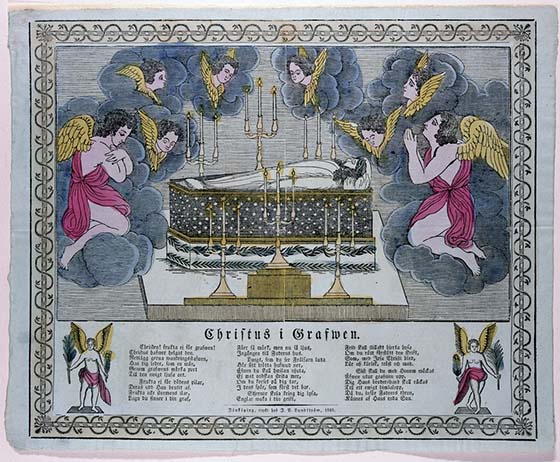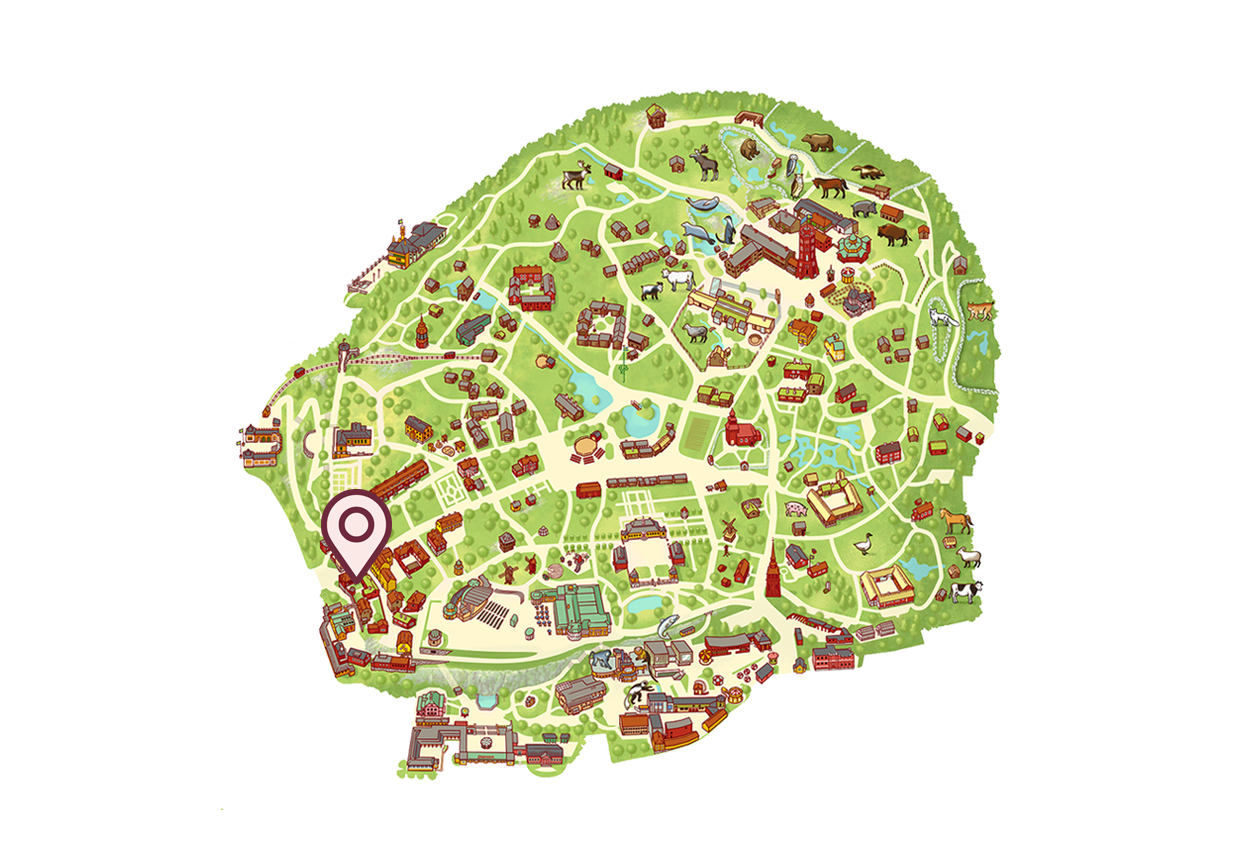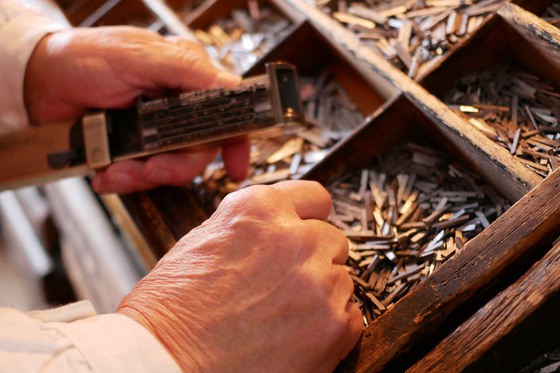The Printer’s Workshop
The art of printing books was a revolutionary 15th-century invention. At the Printer’s Workshop, you can experience the craft as it was practised in the 1840s.

Catchpenny prints
The Printer’s Workshop has a large collection of wooden blocks with engraved motifs that were used to print so-called catchpenny prints. These were sheets of paper with an image that often depicted religious or moralising themes. They were known as ‘chest letters’ in Sweden, because they were often attached to the lid of the chest in which people kept their clothes and other personal belongings. The Printer’s Workshop has an unusual motif depicting Joseph and Jesus – depictions of Mary and Jesus are far more common.
In the picture, the coffin letter “Christus i Grafwen” from 1849 is visible. Photo: Hans Koegel / Nordic Museum.
| Day | Time |
|---|---|
| 23 August 2025 | 11.00-17.00 |
| 24 August 2025 | 11.00-17.00 |
| 6 September 2025 | 11.00-17.00 |
| 7 September 2025 | 11.00-17.00 |
| 20 September 2025 | 11.00-17.00 |
| 21 September 2025 | 11.00-17.00 |
| 24 September 2025 | 10.00-14.00 |
| 25 September 2025 | 10.00-14.00 |
Here you will find the Printer’s Workshop



